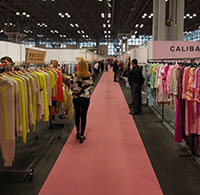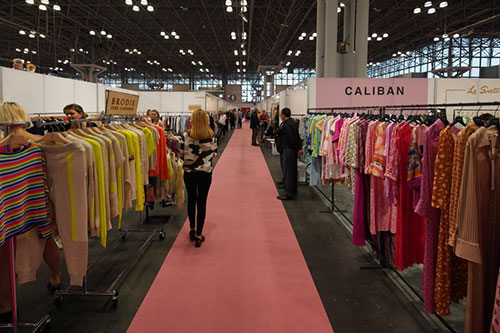FW
"With the recession leading to the rise of numerous direct-to-consumers brands that offer quality, value and luxury at affordable prices, traditional retailers are scrambling to modernise their stores. Caught unawares by the rise of new, modern consumer, these retailers began redesigning their brick and mortar stores as experiential centers where commerce is just one of the many activities that takes places. However, tightening budgets are likely to thrust these upgradation plans into a limbo."
 With the recession leading to the rise of numerous direct-to-consumers brands that offer quality, value and luxury at affordable prices, traditional retailers are scrambling to modernise their stores. Caught unawares by the rise of new, modern consumer, these retailers began redesigning their brick and mortar stores as experiential centers where commerce is just one of the many activities that takes places. However, tightening budgets are likely to thrust these upgradation plans into a limbo. Tech investments are likely to suffer due to the current hard times though they won’t be drastically cut.
With the recession leading to the rise of numerous direct-to-consumers brands that offer quality, value and luxury at affordable prices, traditional retailers are scrambling to modernise their stores. Caught unawares by the rise of new, modern consumer, these retailers began redesigning their brick and mortar stores as experiential centers where commerce is just one of the many activities that takes places. However, tightening budgets are likely to thrust these upgradation plans into a limbo. Tech investments are likely to suffer due to the current hard times though they won’t be drastically cut.
Growing preference for the cloud software
One change that recession could bring along is brands’ adoption of cloud software which offers greater flexibility and lower overhead to reduce the expense of their IT payroll. As Suketu Gandhi, partner in the digital transformation practice of AT Kearney, a global strategy and management consulting firm, notes cloud stands to be the big winner in contracting economic growth as it helps retailers rewrite many of their “paused” tech projects from scratch. These retailers will continue to invest in competitive pricing tools, inventory visibility checkout technologies and other initiatives that enhance customer experience.
and lower overhead to reduce the expense of their IT payroll. As Suketu Gandhi, partner in the digital transformation practice of AT Kearney, a global strategy and management consulting firm, notes cloud stands to be the big winner in contracting economic growth as it helps retailers rewrite many of their “paused” tech projects from scratch. These retailers will continue to invest in competitive pricing tools, inventory visibility checkout technologies and other initiatives that enhance customer experience.
Need to double tech investments
Customer experience will be front and central though retailers will continue to serve their needs. Micheal Kim, Vice-President of data and analytics at AArete, advises companies to double their technology investments to ensure a seamless experience to their consumers. He also encourages them to leverage the e-commerce channels for retail as according to him, technological investments that enhance a customer’s digital experience through e-commerce pushes loyalty in the hardest of times.
Forrester vice president and principal analyst Sucharita Kodali also agrees that consumers’ growing interest in digital shopping channels will drive more investments in online channels. These retailers have been steadily investing in BOPIS software. However, these investments are being curtailed due to recession and sadly companies rushing to cut them first are ones that are emerging as winners.
"Though buyers at the recently held New York City trade shows - -Coterie, Moda, Fame for Apparel and The Accessories Show-pondered over new collections for the Spring/Summer 2020 and Fall/Winter 2019 seasons; increasing tariffs on US imports fueling a trade war between the US and China, dominated most of their discussions."
 Though buyers at the recently held New York City trade shows - -Coterie, Moda, Fame for Apparel and The Accessories Show-pondered over new collections for the Spring/Summer 2020 and Fall/Winter 2019 seasons; increasing tariffs on US imports fueling a trade war between the US and China, dominated most of their discussions.
Though buyers at the recently held New York City trade shows - -Coterie, Moda, Fame for Apparel and The Accessories Show-pondered over new collections for the Spring/Summer 2020 and Fall/Winter 2019 seasons; increasing tariffs on US imports fueling a trade war between the US and China, dominated most of their discussions.
The best visitor flow at Coterie
Among all four, booths at Coterie, representing higher-end contemporary brands, attracted the best and most consistent traffic flow. The Spring/Summer ready-to-wear Black Label collection by the Khardashian siblings received a positive response from both buyers and media while at the same time the beach apparel collection For Love & Lemons generated fantastic traffic. Similarly.,Gretchen Neal, who combines casual styling with fine Italian cashmere and linens, had a number of repeat orders. Her collection retailed from $400-$500 per item.
Consistent buyer attendance at Moda
At the moderately priced contemporary show Moda, apparel brand Berek witnessed a consistent flow of buyers for its tops and jackets that were priced in the range of $24-$124. The interest of the buyers was divided between the brands spring collection and those available for immediate deliveries.
for its tops and jackets that were priced in the range of $24-$124. The interest of the buyers was divided between the brands spring collection and those available for immediate deliveries.
Ryan Knopp, owner of the Esqualo apparel brand, who showcased his Spring/Summer 2020 collections noted that many buyers focused on immediate shipment for fall/winter 2019. Some of the, even requested the brand to deliver items in the Spring/Summer collections immediately even though their deliveries were set between January and March 2020. Blouses in this collection retailed at $32, while tees were sold for around $20, dresses for around mid-$30s and skirts were priced below $30. Knopp plans to raise the prices of his clothing items by one dollar for sales in both US and Canada to offset increased costs due the increased tariffs.
Emphasis on quality, delivery to deal with recession
Tony Drockton, Chief People Officer at Hammit, a handbag and accessories brand doesn’t anticipate a slowdown in sales due to the fear of a recession. Emphasis on quality enables the brand to deal with ongoing difficult times. Though Hammit has been raising prices every year for the past three years, there is no rolling back of prices so far. In fact, the brand’s pricing strategy has helped it to deal with increasing production costs due to an increase in tariffs. In future though Drockton would like to see solution to the ongoing trade, on his part, he plans to stick with his production plans.
Drockton says, China offers highest quality in supply chain and timely delivery. He reveals that several firms that moved their production from China to new factories outside have been dealing with late deliveries or have suffered quality issues.
Fame sees a decline in visitor turnout
Contemporary show Fame, which targeted younger consumers in the juniors or teen markets has seen a dip in visitor attendance at the show is with the current traffic being a repeat of earlier editions. As Mathew Choi, Sales Manager for Sneak Peak noted, many buyers have been pulling back on their orders at the show as the increasing number of vendors provides them more options to choose from. Digital platforms are also establishing their presence at Fame. One such platform, Fashion Go launched six vendors at the show out of the 1,000 on its site. These included brands such as Listicle, Sophie Maries and denim brand Just USA.
Cash-and-carry enables purchases
Few years ago, UBM, which operates these shows, introduced a “cash-and-carry” component to them. The idea behind this was to provide buyers with an opportunity to make purchases on the spot which they can take with them.
The Trinkets section garnered significant attention from buyers with vendors purchasing around sold $7 bracelets and $8 to $13 necklaces.
Brand Licensing Europe (BLE) 2020, which took place at the UK’s ExCeL London, welcomed 8,062 visitors and 268 exhibitors, a record number for the show’s history.
The event was dedicated to brand licensing and extension, connecting big names such as Manchester City FC and Nintendo with product makers who can extend their brands. It was held at ExCeL London from October 06-08, 2019.
The Next year, it will focus on fashion licensing, through apparel, footwear, accessories and beauty. Early stage plans include a live catwalk, with dramatic themed shows beamed onto every digital screen throughout the venue.
BLE 2020 will also explore fast fashion, haute couture collaborations, sustainability, the economy and more.
C.L.A.S.S., the global platform for sustainable materials, fibers and textiles for the fashion business will display its products at the Textile Exchange conference, the influential annual event organised by the eponymous certification agency and non-profit association, in Vancouver, Canada, from October 15-18, 2019. C.L.A.S.S. will display some of its most striking innovations at this conference including its regenerated cellulose fibre Bemberg by Asahi Kasei. Denim brand Candiani Denim will present a range of responsible denim products - from the rigid ReGen to stretch ReLast developed with Roica premium stretch fibres.
Also on show will also be the E.C.O. Kosmos ‘cross collection’ and sustainable path by textile, leather and fashion components manufacturer Italian Converter. Manteco will present the unique BiBye, Woolten and Project43 fabrics, together with the Next Generation of Recycled Wool, where sustainability combines with beauty. Premium stretch fibre Roica by Asahi Kasei presents its Roica Eco-Smart family, the multi-certified range of sustainable stretch yarns.
Tintex will introduce WEME, a naturally advanced jersey that represents a multifaceted world and the fully tested and award winning Colorau Natural Dye commercial innovation. YKK company’s founding philosophy is the Cycle of Goodness, meaning that corporate responsibility, transparency and respect for the world.
Vietnam’s exports of garment-textile products in the first nine months of 2019 were up 9.2 per cent. The sector’s trade surplus was up 16.8 per cent. The income surge has been attributed to a shift of manufacturing units from China to Vietnam.
Once the free trade agreement with the EU comes into force, investments in Vietnam’s textile and garment industry are expected to increase further. There are over 2,000 textile and garment projects in the country. Vietnam’s supply chain diversification has been happening for a few years already, mainly driven by rising labor costs in China. Even before the trade war, Vietnam was getting attention because of the proximity to China and because of the existing infrastructure in the country. The full supply chain has been set up in the country for the past decade already.
But customers are avoiding long-term orders and trying to reduce prices, eating into firms’ profits. The yarn market witnessed a sharp decline in both demand and prices between the end of 2018 and the first quarter of 2019. Vietnam’s yarn producers, particularly those exporting products to China, have been hit the hardest by continuous price decreases. The situation is getting worse as these companies are facing fierce competition for orders from FDI-funded firms and those from Thailand, Indonesia, and Pakistan.
Taipei Innovative Textile Application Show (TITAS) took place in Taiwan from October 7 to 9, 2019. The event hosted 423 exhibitors from 12 countries, plus 20 trade organisations representing Taiwan’s range of suppliers and manufacturers. Key themes at the event were functional applications, sustainability, smart textiles and intelligent manufacturing.
The highlight of the event was the one-to-one business meetings, arranged between vendors and brand representatives. In addition, there was a program of seminars and product presentations. One section showed visitors how the use of digital transformation can help create value for the textile industry. Another area demonstrated the concept of automated manufacturing in four stages: design, pre-sew, sewing and finishing.
Songbeam, based in Taiwan launched a range of bedding made from Tencel Lyocell and Modal cellulosic fibers and using nanotechnology to apply fish oil collagen into the fiber. The bedding is soft to the touch and has moisture management and temperature regulation properties which keep the skin cool, smooth and comfortable. Another Taiwan-based company Niching has developed a range of abrasion-resistant fabrics for use in socks and work wear. Niching designs and prepares nanoparticles to create nanomaterials which have high functionality. The nanomaterials are used on a carbon material with a 3D nanostructure.
When it comes to fashion and footwear US teens prefer sports brands. For Generation Z, -- those born between 1997 and 2012 -- Nike is the favorite clothing brand, followed by American Eagle and Adidas, in that order. Nike also leads among US teens in the footwear segment. Nike is followed by Vans and Adidas in the footwear segment.
Gen Z is highly social, online and offline, with greater conversational engagement than adults in most consumer categories. Athletic shoe brands such as Reebok, Converse, Vans and Puma have also lost out among Gen Z over the last five years. Teens are moving away from traditional youth brands such as Abercrombie & Fitch. In the apparel sector, youth brands such as Hollister and Aeropostale have also lost ground with Gen-Z consumers in the last five years. Reduced interest in these heavily mall-reliant retailers could well reflect a wider trend, as young consumers move away from destination retail, increasingly preferring convenience store-style spaces. Discussions about brands are behind on an average 19 per cent of consumer purchases, accounting for somewhere between seven and ten trillion dollars in annual sales.
However, important as trends may be, there are plenty of brands that are succeeding despite them.
Indonesia will tighten restrictions on textile imports. The restriction is aimed at protecting domestic producers of products such as certain types of yarns, fabrics and other goods. The reasoning is that products that can be produced domestically should no longer be imported. Textile importers have to gain approval before they can ship in textile goods.
The country’s textile industry has weakened in the past three years due to an influx of imported textiles combined with sluggish consumption by Indonesian consumers. Imports of textile fabrics rose by 74 per cent between 2016 and 2018. Imports of textile products, such as some types of synthetic yarns, doubled in the three years to 2018. Indonesia imports products from China, South Korea, Thailand and Vietnam, among others. Companies are facing a cash shortage resulting from tough competition with imported products. Another problem Indonesia faces is smuggled used clothing. The country does not allow imports of secondhand garments.
The industry hopes textile and garment rules are relaxed to help local businesses boost their exports. Companies that have been so far oriented to local markets are being encouraged to become more export oriented. With economic growth, and a shift in demand from basic clothing to functional clothing, such as sportswear, the national textile industry is building production capabilities and increasing economies of scale in order to meet the demand in domestic and export markets.
At its upcoming edition – from January 7 to 10, 2020 – Heimtextil will present an extended range of printing and processing machines for the textile industry and expand the product segment textile technologies. The exhibition will highlight the opportunities afforded by the current technological upheavals in the industry and present the latest product developments. Its Textile Processing area will be expanded with new additions at the upcoming Heimtextil. New exhibitors at the event include Demsan Tekstil Makine and Tunca Teknik from Turkey, Joos sewing machines from the USA, Monti Antonio from Italy and Neenah Coldenhove and Wybenga from the Netherlands. Wybenga will present the complete program of machines for the manufacture of curtains and blinds in Frankfurt. J. Zimmer Maschinenbau from Austria and ZSK Strickmaschinen from Germany will also present their new products.
According to ZSK, its presence at Heimtextil will focus on the trends towards individualization and personalisation. In line with this, the latest embroidery machines with more needles will be presented. The higher number of needles should make the workflow more effective. Sales channels will be optimized and online ordering systems and shops better stocked.
Italian Textile Machinery (ACIMIT) will also be represented with a joint stand and will present the technical innovations of its members in the processing sector. In the Digital Print Technology area, printer manufacturer HP from Germany, Mtex Solutions from Portugal as well as Aleph, Fotoba International, MS Printing Solutions and Sublitex from Italy will also be represented.
India wants China to provide easier access to its products. China used to be a big buyer of Indian cotton yarn and fabric but due to preferential tariffs, exports from Vietnam, Pakistan and Indonesia to China have been growing and so India has lost almost 50 per cent of its exports this year. Indian exporters want removal of trade barriers for products they ship to China.
Also China is exiting production of several goods due to higher labor costs and pollution concerns. This presents an opportunity for India. Pre-approved facilities for manufacturing can tap the opportunity that arises when Chinese companies shift production bases.
On the other hand at a time when Regional Comprehensive Economic Partnership negotiations are going on there are a lot of reservations about opening up the Indian market for China. India largely exports raw materials like steel and cotton, while China sends finished products to India. India wants to protect its manufacturing sector from cheaper Chinese goods and wants to export more value-added products. Similarly a free trade agreement in textiles presents a threat of increased synthetic textile imports from China. Similarly, agri exports present an opportunity as well as a challenge. India can grow its leather footwear exports to China, but China is a large producer of cheaper non-leather footwear.












